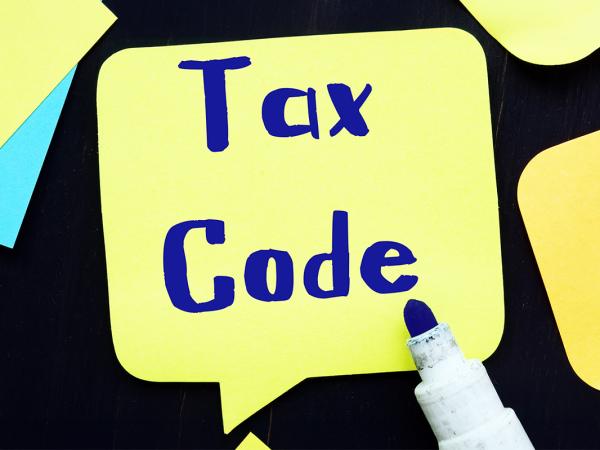How the Pay As You Earn system works: an employer's guide
On this page we tell you more about how PAYE deductions work. For most employers, their PAYE deductions will be handled by their payroll software. Even those who are running their payroll manually can access help in the form of PAYE tax and National Insurance calculators. Nevertheless, if you want to run your own payroll, it will certainly help to have a basic understanding of the PAYE system – so that you can spot errors or so that you can check your employees’ payslips.

Content on this page:
What PAYE is
Pay As You Earn (PAYE) is HMRC’s system to collect income tax and National Insurance from employee’s pay.
PAYE spreads an employee’s income tax bill over the tax year (which starts on 6 April of one year and ends on 5 April in the next) rather than paying tax in one lump sum. It is important to understand that PAYE is not an exact measurement of an employee’s tax liability; rather it is an estimate of the tax that the employee should pay based on HMRC’s understanding of the income that they will receive and their personal circumstances.
Pay for tax and National Insurance purposes
The PAYE regime requires employers to deduct tax and National Insurance from most payments made to employees and then pay this over to HMRC.
To be able to operate PAYE correctly, you must therefore understand the main things that count as pay for tax and National Insurance contributions (NIC) purposes (pay for the purpose of NIC is broadly the same as pay for tax although there are some differences). See our guidance on pay and deductions for more information.
Tax under the PAYE system
Under PAYE, a tax code is used by an employer to calculate the amount of tax to deduct from an employee’s pay. A tax code is normally made up of numbers and letters for example 1257L or K396.
We explain more about the way tax codes work on our page Tax codes: what employers need to know.
NIC under the PAYE system
If you employ someone, as well as collecting and sending the right amount of tax to HMRC, you will also need to collect and send NIC to HMRC.
NICs are paid to build up entitlement to certain state benefits, including the state pension.
Contributions are based on a percentage of earnings. Both employees and employers usually make payments. NIC payments made by employees are called primary Class 1 contributions and those made by employers are called secondary Class 1 contributions.
For 2024/25, employees do not pay NIC on pay up to the primary threshold of £242 per week (£1,048 per month). However, between the lower earnings limit (LEL) of £123 per week (£533 per month) and the primary threshold, employees will be treated as if they have paid NIC, which can help protect entitlement to the state pension and other benefits.
This is one of the reasons why employers are always required to record and report information about employees who earn at least the LEL under the PAYE system, even if no money actually needs to be sent to HMRC – so that HMRC can see that they need to mark NIC as paid on the employee’s record.
For 2024/25, employers are liable to pay NIC on any employee’s pay over £175 per week (£758 per month).
You can see the key contribution rates of employer NIC on GOV.UK. However, because most small employers are entitled to an employment allowance which is worth up to £5,000 a year off their National Insurance bill there may not actually be any employer’s NIC to pay. We explain more about this in our employment allowance section below.
It is important to note that unlike tax, which is calculated cumulatively (that is, by looking at what has happened in the tax year so far), National Insurance is calculated by looking at employee’s earnings, whether paid weekly or monthly, in isolation, on each payday.
Note that there is an annual maximum of contributions that applies where someone has two or more jobs but this only really affects those on higher incomes.
National Insurance for those aged under 21, veterans and apprentices under 25
Employers with employees under 21 years old do not have to pay Class 1 secondary contributions (that is, the employer’s contribution) in respect of their pay, providing the earnings are less than £50,270 per annum (£967 per week or £4,189 per month).
The employee will continue to pay National Insurance at the usual rates – so this is a benefit only to the employer.
Full details of the scheme can be found on GOV.UK. A similar provision applies to veterans and apprentices under 25.
There are different National Insurance category letters to support all these schemes.
Freeports
You can claim relief from employer Class 1 National Insurance contributions when you employ someone in a UK Freeport tax site.
As part of the government’s work to level up and boost economic activity, they have created a number of Freeports to generate employment opportunities in some of the most deprived communities across the UK.
One of the benefits to employers that operate within a Freeport location is a reduction in the amount of employer NIC payable. This is given via the Freeport Upper Secondary Threshold (FUST), which is set at £25,000, below which a zero-rate of employer NIC will be applied. The calculation of employee NIC is unaffected.
Information on GOV.UK gives more details on where these Freeports are located and how the scheme operates. There is a different National Insurance category letter to support this scheme.
Employment Allowance
In 2024/25, you may be able to claim the Employment Allowance of up to £5,000 a year off your National Insurance bill.
Who can claim it
The Employment Allowance is targeted at smaller employers, so your employer's Class 1 NIC liabilities must have been less than £100,000 in the previous tax year.
It includes individuals employing certain care and support workers. However, employers of other domestic staff (such as chauffeurs, gardeners, nannies) cannot get the allowance. Certain other employers are also not eligible, for example single person limited companies, where the director is also an employee.
Employers whose employees are all either under 21, veterans or apprentices under 25 (see above for further information), do not need to pay employer’s NIC anyway, so do not need to claim the Employment Allowance.
If an employer is paying all their employees less than £175 per week or £758 per month in 2024/25, they will not be liable for employer's NIC, so do not need to claim the Employment Allowance.
How it works
The allowance is given as a credit to reduce the employer’s National Insurance contributions actually payable, up to a maximum of £5,000 over the whole tax year.
This means an employer could pay their employee anything up to about £870 per week in total in 2024/25 (around £45,000 per annum) and will have no employer’s NIC to pay as the liability comes under the £5,000 allowance. Alternatively, an employer could employ three full-time employees on the national living wage without paying employer NICs.
By comparison, an employee paid £900 a week in 2024/25 will generate an employer’s NIC liability of around £5,200. Under the Employment Allowance, the first £5,000 can be deducted, leaving £200 payable for the tax year.
Note that any employer’s NIC above £5,000 will only be paid once the Employment Allowance has been used up, so in the example above you would pay no employer’s NIC for the first 11 payment months of the tax year (or first three quarters if you are a quarterly payer) and £200 in total for month 12 (or in the final quarter).
Claiming the allowance
How you claim the allowance depends on whether you file online or on paper.
- Filing online
-
The Employment Allowance is usually claimed on an Employer Payment Summary (EPS) which you should submit at the beginning of the tax year, or when you take on your first employee if later (your payroll software might prompt you to do this). You simply tick the box in your payroll software which confirms you are eligible and the Employment Allowance will be applied automatically to reduce your employer’s NIC bill.
If you use HMRC’s Basic PAYE Tools (BPT) software, then you will find the box to tick in the Employer details section – select ‘Change employer details’.
You must send in an EPS to tell HMRC that the allowance is being claimed each year. If you simply do things as usual but reduce the amount that you pay to HMRC by the allowance, this will flag as an underpayment on their system and it is likely you will be contacted by HMRC.
Please also note you only need to tick the relevant box once to make HMRC aware you are claiming the Employment Allowance – this will then apply on an ongoing basis throughout the year. You should not untick the box when the Employment Allowance has been fully used.
- Filing on paper
-
Tick the box which asks whether the Employment Allowance is to be claimed on page 2 of the form RT5. You need to subtract the value of the allowance from your employer's NIC liability before you make a payment to HMRC.
For more information on claiming the Employment Allowance, see booklet RT7 – Guidance for employers exempt from filing Real Time Information online.
Claiming after the tax year has started
You can claim the Employment Allowance after the tax year has started. If claiming it late means that you will not have used the maximum amount of Employment Allowance allowable, HMRC will offset the balance against another PAYE liability or refund you, so the allowance is not lost.
More information on the Employment Allowance
Detailed guidance on the Employment Allowance can be found on GOV.UK.
Other payments collected through the PAYE system
As well as collecting income tax and National Insurance, the PAYE system is used to collect things like student loan repayments and attachment of earnings orders. More about each of these can be found on our pay and deductions page.
Apprenticeship Levy
The Apprenticeship Levy, which has been payable by certain employers since 6 April 2017, is charged at a rate of 0.5% of an employer’s annual pay bill.
A £15,000 annual allowance given to employers means that the levy is only paid by employers whose annual pay bills exceed £3m – so it is not relevant to small or micro employers. You can read more about it on GOV.UK.



